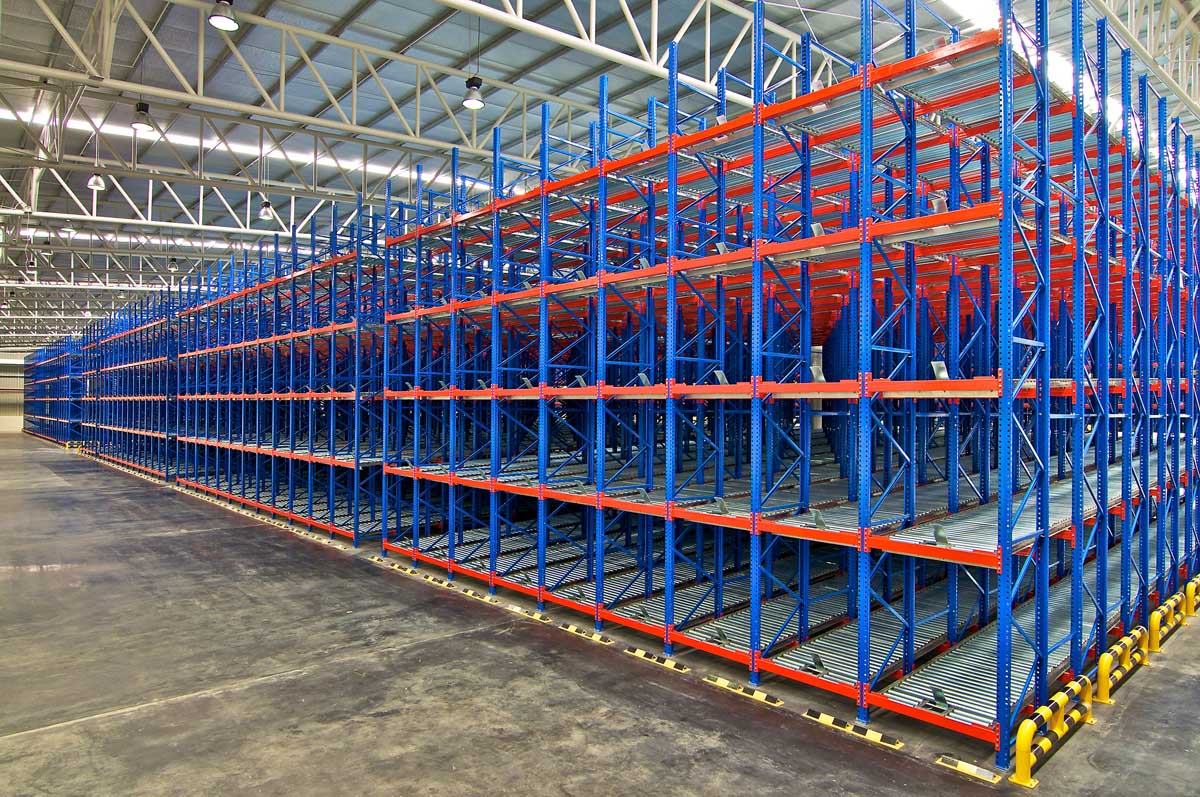
Warehouse Sizing: How to Calculate Cubic Feet
If you’ve decided to expand your real estate footprint to fit your company’s growing needs by leasing warehouse space, there are some important decisions to consider. And while identifying how many square feet of warehouse floor space you need is important, figuring out the cubic-footage calculation for warehouse space is equally essential.
Here’s what you’ll need to know about calculating and utilizing cubic feet to optimize your business’ efficiencies:
Understanding Vertical Storage Measurements and Accounting for Non-Storage Warehousing Space
While square footage calculations account for the overall footprint of warehouse space on the ground, cubic footage factors in the height of the building. Cubic footage becomes important to prospective warehouse tenants who want to maximize storage space with vertical storage solutions.
Vertical storage availability in a warehouse is not measured to the full ceiling height of a building. Instead it takes into account the clear ceiling height that is free of lighting and other electrical fixtures, heating ducts, or sprinkler system equipment that would get in the way of inventory storage.
Businesses should work directly with the building or property owner to determine the available cubic storage space of a building and whether or not your product can be stored vertically. Warehouses with higher ceilings and more available vertical storage space may lease for a higher cost per square foot than those with lower ceilings and less vertical storage space.
You’ll want to make the best use of available building space, while taking into account both the rental costs of that space and your budget.
Another key factor in accounting for the storage capabilities of a warehouse is determining the amount of space that will be used for non-storage purposes. These spaces include:
- Office space
- Administrative space
- Loading area space
- Aisles
All of these non-storage spaces need to be considered before signing a lease, since they won’t be included in the overall usable storage footprint within your building.
How to Calculate Cubic Footage
Calculating cubic footage should be seen as an opportunity to expand upon an existing footprint to fit your warehousing needs.
Cubic feet represents the total usable space within the building footprint (length by width by height). This is found by multiplying your usable square feet by the height of the building.
Often, this results in a total that’s greater than the actual usable cubic feet of the building. This is usually due to lighting and other electrical fixtures, heating ducts, or sprinkler system equipment suspended from the ceiling, as well as any township or local restrictions.
To calculate your usable cubic footage, take the clear height measurement (the vertical space measurement that is free of obstructions), subtract a few feet from that number, and then multiply that number by the square feet of the warehouse.
Due to the cost incurred by purchasing, building, and securing racking and other systems than enable you to utilize cubic square feet, businesses should always make sure that they are maximizing the available space within a warehouse.
In order to get the most out of your warehouse space, it is best to consult with the landlord or building owner to get the calculations for the allowable maximum height of the building. This will help you to calculate usable cubic footage and maximize your vertical storage opportunities.
Gauging the Impact of Traditional Shelving on Available Warehouse Space
To get the best possible utilization out of your warehouse’s vertical space, businesses should consider a variety of traditional shelving options. Shelving selection impacts overall warehouse organization and utilization. It can also impact—positively or negatively—warehouse operations such as loading and shipping.
Common traditional shelving options include:
- Pallet racks
- Cantilever racks
- Rivet shelves
- Containers and container shelving
In addition to traditional shelving options, businesses can customize vertical storage systems for their specific needs. But customized solutions are often expensive and may be subject to code reviews and additional costs such as lowering sprinkler heads into racked areas. Customizing shelving solutions, especially if adding in permanent fixtures, could be cost prohibitive if your business needs to grow or expand its overall warehouse space in the near future.
Before signing a warehouse lease, it’s important to determine which method of traditional shelving or customized shelving makes the most sense for your inventory and your business needs.
Standards and Regulations for Spacing Between Shelves and Other Non-Storage Warehouse Space
The standards and regulations for spacing between shelves and other non-storage warehouse space can vary by different municipal laws and regulations.
For this, it is essential to refer to your township ordinances. Business owners should also consult general warehouse laws and safety regulations, including those from the Occupational Safety and Health Administration (OSHA). Safety should always be a priority in making shelving and storage decisions for your warehouse.
Warehouse Space Calculations: Consult the Experts
While you should generally understand how to determine the proper requirements for shelving, racking, and utilization of cubic feet in a warehouse, property owners and commercial real estate brokers can provide useful insight and industry expertise to help business owners lease the right warehouse space.
Industrial Investments owns and manages several million square feet of warehouse, industrial and flex rental space throughout the Delaware Valley for three generations. They provide prospective tenants with detailed property information that can help businesses maximize every inch of available warehouse space.